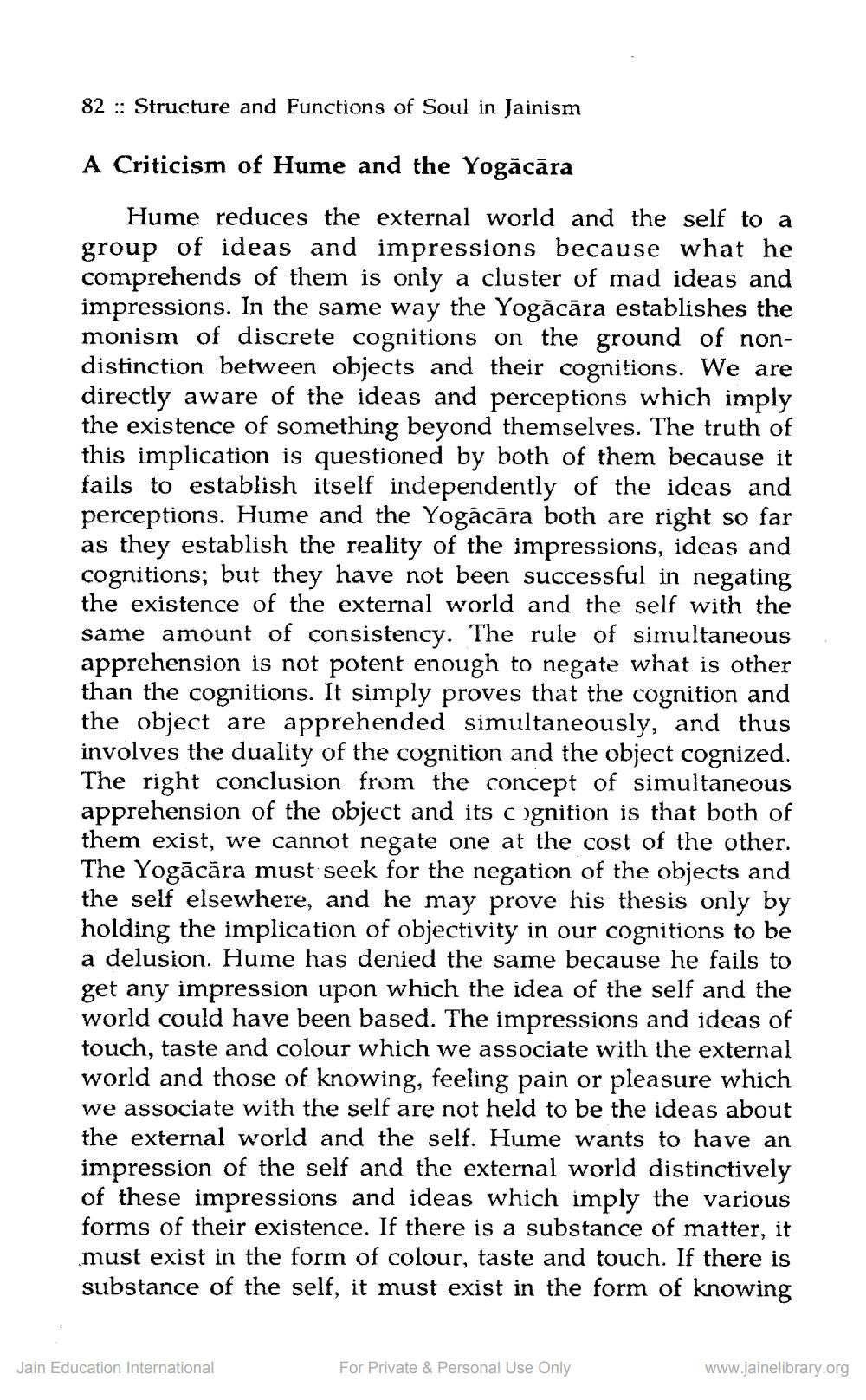________________
82 :: Structure and Functions of Soul in Jainism
A Criticism of Hume and the Yogācāra
Hume reduces the external world and the self to a group of ideas and impressions because what he comprehends of them is only a cluster of mad ideas and impressions. In the same way the Yogācāra establishes the monism of discrete cognitions on the ground of nondistinction between objects and their cognitions. We are directly aware of the ideas and perceptions which imply the existence of something beyond themselves. The truth of this implication is questioned by both of them because it fails to establish itself independently of the ideas and perceptions. Hume and the Yogācāra both are right so far as they establish the reality of the impressions, ideas and cognitions; but they have not been successful in negating the existence of the external world and the self with the same amount of consistency. The rule of simultaneous apprehension is not potent enough to negate what is other than the cognitions. It simply proves that the cognition and the object are apprehended simultaneously, and thus involves the duality of the cognition and the object cognized. The right conclusion from the concept of simultaneous apprehension of the object and its cgnition is that both of them exist, we cannot negate one at the cost of the other. The Yogācāra must seek for the negation of the objects and the self elsewhere, and he may prove his thesis only by holding the implication of objectivity in our cognitions to be a delusion. Hume has denied the same because he fails to get any impression upon which the idea of the self and the world could have been based. The impressions and ideas of touch, taste and colour which we associate with the external world and those of knowing, feeling pain or pleasure which we associate with the self are not held to be the ideas about the external world and the self. Hume wants to have an impression of the self and the external world distinctively of these impressions and ideas which imply the various forms of their existence. If there is a substance of matter, it must exist in the form of colour, taste and touch. If there is substance of the self, it must exist in the form of knowing
Jain Education International
For Private & Personal Use Only
www.jainelibrary.org




